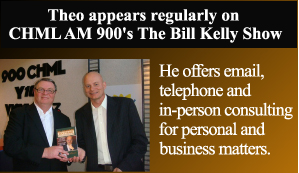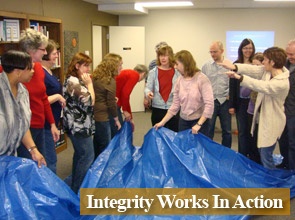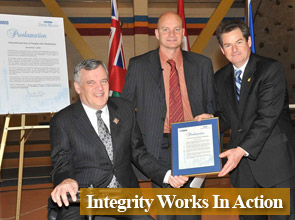It’s become quite the sign of insightfulness these days to proclaim that conflict is healthy, necessary, and even generative of new ideas and energy. Like any truism, this assumption needs to be questioned. After all, if conflict is so great, why do we all want to learn how to resolve it?
By any definition of value, conflict at work is destructive. The only thing worse than conflict, is avoiding it. The best thing to do is prevent it. I should probably explain.
Conflict at work has certain symptoms such as stress, anxiety, strained relationships, grievances and litigation, presenteeism, employee turnover, loss of productivity, increased client complaints, absenteeism, sabotage, injury and accidents, disability claims, and sick leaves. Still think conflict is healthy?
Conflict has costs. A 2005 UK survey by Roffey Park found that “78% of managers are suffering from work-related stress, 52% have experienced harassment, 46% have seen an increase in conflict at work.” (Roffey Park [online], Failure to manage change heightens stress, harassment and conflict at work, survey reveals, Jan. 05). And “The total value of lost work time due to stress is estimated to be $1.7 billion. (WarrenShepell [online], Health & Wellness Research Database, 2005).
One way to understand the negative nature of conflict is to see conflict as war, perhaps on a small interpersonal scale, but war none-the-less. Conflict involves fighting, defending, attacking, winning and losing. By its very nature, conflict is destructive. There is no such thing as “constructive conflict” no matter how euphemistically we’d like to frame it.
Conflict needs to be resolved, but it is worthwhile to understand the conditions from which it emerges. What is it that transforms a different perspective or healthy disagreement into destructive conflict? After all, upon reflection, most would agree that passionate disagreement, not conflict, is vital to organizational growth and learning. The difficulty may lie in our inability to distinguish between the two.
Conflict is personal. It is not based on what is best for the organization or the relationship, it is a contest based on “you and me”. Conflict escalates and thrives on the assumption of negative intent, blaming others for our feelings, finger pointing, withdrawing and pretending, indirect communication and gossiping. A good rule of thumb to take the personal element out of workplace conflict is to relate all conflict resolution back to your organization’s Mission Statement. “How is this issue preventing us from achieving our mission? It can’t be about us, it has to be about the team.”
Conflict emerges from feelings of insecurity due to perceived threat. It can come from a perceived need to stand up for values. Conflict may also arise from opposing needs such as time or work priorities and of course it can come from misunderstanding. It’s important to remember as well that not everyone is well-intended; there are indeed some people who do thrive on conflict and seek to create it.
Conflict always has an emotional component to it, and that is why one can never truly win a conflict with people they care about or even just need to work with. You may “win” your point, but in the process you may hurt the other person to such a degree that they no longer trust you or care to be with you. It’s been said that there are only three outcomes from a conflict: Win & Win, Win & Lose, or Lose & Lose. I would say that the only positive outcome is Win & Win where both parties walk away feeling they have gained something. Lose & Lose is a process associated with compromise, and though many people value that as a solution it really does not help for anyone to feel compromised. And as I mentioned, there truly is no such thing as Win & Lose because you lose what’s important through winning your point.
Conflict resolution is much more than a cognitive process of determining solutions. Since conflict is emotion based, the resolution process must include a strong emphasis on what people need when their emotions are aroused. Think of what you need in the midst of a conflict. If you’re like most people, you need to be heard, respected, valued, and appreciated. If you receive all of that you are much more likely to be able to de-escalate your part of the conflict and then, and only then, proceed to the solution stage of the process.
So what exactly is resolution? It is not an agreement/consensus. It is not a result.
Resolution is a process which leads to a solution that all parties can live with in such a way that your organization’s or relationship’s productivity is enhanced. Again, it is important to take the personal component out of the conflict and make the process of resolution about the bigger picture.
Here is my Appreciative Conflict Resolution Process. It is “appreciative”, not of the conflict, but of the people who are trying to resolve it. Follow these steps and you will both resolve conflicts and prevent them in the future:
1) First ask for time. Too often we rush into someone’s face because we’ve now mustered up the courage to do so and of course that would set anyone on edge.
2) Identify the perceived issue and why it must be resolved. Remember the “big picture.” “Exactly what is the issue and how does it relate to our mission?”
3) Express own perspective about issue. “I” statements work well as they emphasis the presence of multiple realities.
4) Express own feelings about the issue. Without blaming, acknowledge the emotional component. Are you hurt, angry, afraid, frustrated?
5) Ask about the other’s perspective. Too often we just get things “off our chest” and forget to invite dialogue.
6) Ask about the other’s feelings. Demonstrate empathy and caring.
7) Take responsibility and apologize if needed. Many of us struggle with saying “I’m sorry”, but it’s a vital skill to have.
8) Brainstorm solutions. Way down the list is collaborative problem solving. You’ve earned this place through doing the above. A great tip is to do so sitting “side by side” looking out at a flip chart. It’s very hard to fight with someone while you’re sitting facing outward in the same direction as it emphasizes an experience of partnership.
9) Settle on a solution. That’s not always possible, but going through the above steps will make it much easier to “agree to disagree.” That in itself can be a solution.
10) Thank each other for caring. This is often overlooked, but very important to do. People respond well to appreciation. Thanking them for caring enough to work through things with you will set a great tone for your ongoing relationship.
11) Set a follow-up check-in. It’s important to do this to ensure that everything continues to be well, that there aren’t any left over pieces, and to send a strong message about the value of the relationship.
Conflict is not necessary at work. The freedom to express passionate differences is. Creating a work environment true to the Voltaire saying, “I may not agree with what you say, but I will defend to the death your right to say it” will transform the energy behind conflict into creative exchanges of views and ideas by people who feel safe to differ. A diverse workplace does not just refer to such variables as ethnicity, culture, gender, ability, sexual orientation; it includes inviting diverse perspectives.
Adhering to organizational values helps create a safe environment where people can passionately yet respectfully disagree. Valuing direct communication, genuine “open-door” policies, transparency about organizational issues and decisions, on-going expressed appreciation of colleagues, inviting passionate dialogue and playful debate, challenging the idea not the person, and establishing a team-first culture all will contribute to preventing conflict and encouraging creative differences.












